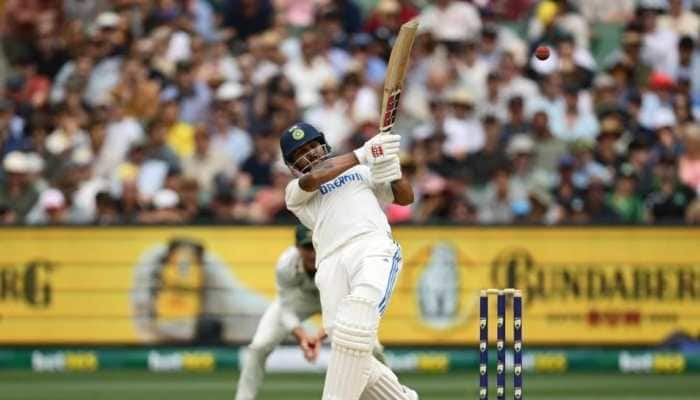Is it the right time to devalue Indian rupee?
Till September 14, Finance and Commerce Ministry corridors were abuzz with possible rupee-devaluation topic. However, as the next day arrived, all these speculations went to the backburner.
Trending Photos
)
Zee Media Bureau
The latest debate that is creating headlines in the business newspapers nowadays revolves around government's plans to devlaue currency in order to make it more competitive in terms of exports.
Till September 14, Finance and Commerce Ministry corridors were abuzz with possible rupee-devaluation topic. However, as the next day arrived, all these speculations went to the backburner.
The fire got doused finally after Finance and Commerce Ministry came up with these sturdy denials:
"Commerce Ministry pushes for all these things. There is no proposal to devalue," a top Finance Ministry official said.
"Exporters would have come to the Commerce Ministry with this issue. However, there is nothing to discuss from our side."
The Indian currency fell abruptly after devaluation reports, but trimmed losses after denial from the government.
Economic Affairs Secretary Shaktikanta Das hit the final nail on the coffin when he declared that the rupee is not an administered rate. He added that the value of rupee is determined by the market and there is no plan to change the policy and the market reports that government want to devalue rupee is false.
The Indian currency fell abruptly after devaluation reports, but trimmed losses after denial from the government.
Underlying Economics
With exports falling in all but one of the past 20 months, there were reports that the Commerce Ministry may discuss with Finance Ministry possible rupee-devaluation. This sparked a sense of optimism in the currency market. With devaluation would have arrived competitiveness, that could have helped the dull exports to improve
As per the latest data, India's exports declined for the second consecutive month in August by 0.3 percent to $21.51 billion due to dip in shipments of products like petroleum and leather.
The outward shipments stood at $21.58 billion in August 2015.
The country's imports too contracted by 14 percent to $29.91 billion, leaving a trade deficit of $7.67 billion in the month under review.
The trade gap was narrowed in August this year from $12.4 billion in the same month last year, according to the data released by the commerce ministry.
The important export sectors which recorded negative growth in the month include petroleum (14 percent), leather (7.82 percent) and chemicals (5 percent).
Further dip in gold imports too helped in bridging the trade gap. The precious metal imports dipped by 77.45 percent to $1.11 billion in August 2016.
Oil imports during the month fell by 8.47 percent to $6.74 billion.
Since December 2014, exports fell for the straight 18 months till May 2016 due to weak global demand and slide in oil prices. Shipments witnessed growth only in June this year thereafter again entered into negative zone in July.
However, as the government came up with denial, rupee may be left in a state of confusion for some more days.
Let the Rupee Find a Fair Value for Itself
Generally, experts make use of Real Effective Exchange Rate (REER) during the times when market is low in volatility to get a real idea about the fair value of rupee. REER is the weighted average of a currency of one nation in comparison with others (trading partners mostly), adjusted for inflation.
A currency for which the REER index is closed to 100 is termed to be valued fairly and anything above or below it is considered to be overvalued and undervalued respectively. The rupee has been undervalued since 2004 to 2006 when the currencies from six major trading partners are taken into basket.
The REER (six currencies) fell to an all time low at 93.90 in March 2009 and for the present year it stands at 96.94. This means we are still overvalued and more fall is anticipated to achieve the all time low of 93.90.
Therefore, the rupee will plunge more against the greenback (maybe around 70, which adds up to 30% fall since the starting of the year) irrespective of what our government or the RBI comes up with. To stem its fall, dollars need to be brought into the economy before long.
Exports and the Rupee Fall
Renowned economist Surjit Bhalla had once opined that even nations with current account surpluses faced currency depreciation by roughly 25 percent to 30 percent on an average at some point of time in their history. It helped them in boosting up exports furthermore.
Usually, the rupee depreciation brings with itself competitiveness that increases scope of export for any country.
This results in an amplification of exports and decrease in imports, bringing CAD back to a sustainable level. Therefore, currency depreciation is a preferential option even in good times and China is a perfect example for this.
However, India doesn’t seem to be benefited by this age old principle of economics presently. Why?
The reason is that our top 5 exports – petroleum exports, gems, jewellery, gems and textiles contain extensive imported inputs. And hence, any constructive effect in exchange rate doesn’t bring in any appreciative effect on the export side.
Stay informed on all the latest news, real-time breaking news updates, and follow all the important headlines in india news and world News on Zee News.
Live Tv







)
)
)
)
)
)
)
)
)
)
